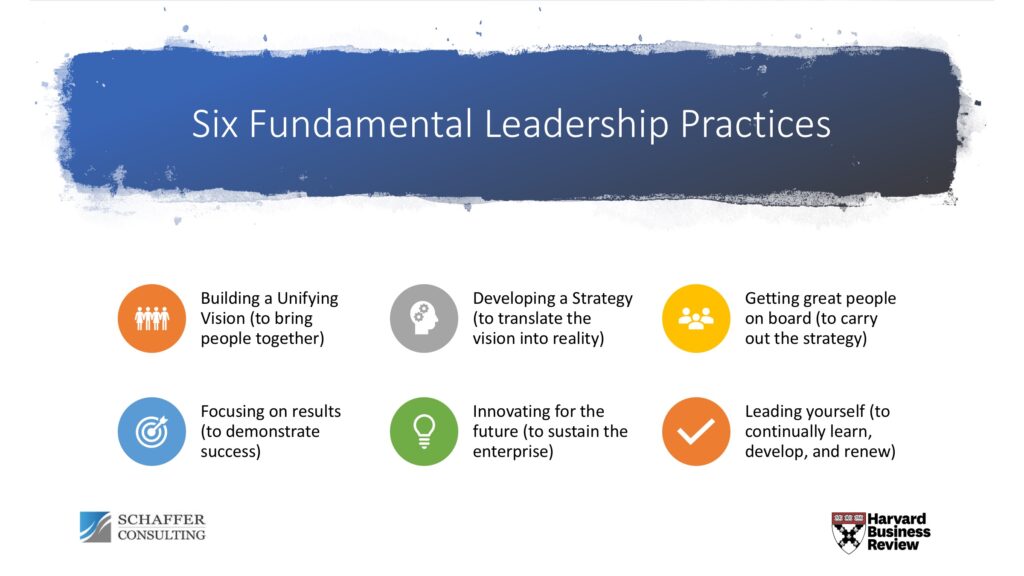Leadership development is a $200 billion industry. From coaching existing leaders, to teaching new MBAs, to books and courses, businesses and individuals are spending a huge amount of money in the pursuit of producing or becoming a better leader. But is it working?
Perhaps not: The average CEO tenure at large-cap companies has been steadily declining for the past five years, and a recent McKinsey study found that two years after an executive transition, up to 46% of those transitions are regarded as failures or disappointments. In light of those statistics, it doesn’t look like we’re getting the ROI on that investment. So why is this?
To help answer that question, we invited a dozen Group HRDs to a breakfast briefing co-hosted with the Harvard Business Review and chaired by Ron Ashkenas, an Emeritus Partner of US-based Schaffer Consulting. Ron brings a wealth of experience from a 30-year long career advising businesses of all kinds on leadership challenges and was sharing insights from his latest book “The Harvard Business Review Leaders Handbook”.
What’s Happened to Leadership?
Ron argues that what’s needed in the leadership sphere now more than ever is a back to basics approach. At a time when organisations are demanding more and better leaders in the face of global competition, changing markets, new technology, and shifting social norms, there has been an explosion of new leadership approaches. Unfortunately, this quest for new answers has often led to gimmickry, simplistic self-help, heroic modelling and ultimately a disconnect with what the organization needs to succeed.
For example, easier access to information through Google and better distribution channels like Amazon has meant there are more routes to market for leadership insights to take. There are more than 60,000 books on Amazon on leadership and more than 522,000,000 search results on leadership in Google.
With all of this, it can be hard to distinguish the signal from the noise. There are some books that encourage you to model your leadership style on Steve Jobs, Richard Branson, Oprah Winfrey or even Genghis Khan. Choose one or choose them all. Others books refer to the 14 traits/5 characteristics/10 qualities or 8 skills that are needed for successful leaders. Others still talk about leadership as if it were a religion with philosophical values that are difficult to put into practice.
So What is Leadership?
This question was put to the room and the answers that came back included inspiring people, having a vision, followership, developing future leaders, clarity of purpose, strategy of execution and engagement.
All these answers are correct but as Ron points out, whenever this question is asked there is always a large spread of answers. Maybe we’re not as crisp and clear about leadership as we need to be?
So what leadership insights should you be listening to? Or more fundamentally, what do leaders actually do that makes them successful?
Ron and his co-author Brook Manville reflected on their combined sixty years consulting experience, read and dissected a wide variety of leadership literature, identified the key themes on leadership topics that have been recurring in the Harvard Business Review over the past few decades, and interviewed forty plus leaders to try to zero in on the fundamental elements of leadership.
A Definition of Leadership
The first step for Ron and Brook was to create a definition of leadership. Ron and Brook define leadership as:
“Achieving significant positive impact by building an organisation of people working together towards a common goal.”
The underlined sections are of particular importance. Firstly, the primary job of leadership is to get results, to create impact, but the impact must be positive. There are plenty of leaders and businesses who many would argue are having a net negative effect either because of their chosen style, or their nefarious or corrupt intent. Secondly, the “organisation of people” that the leader works with is not only the traditional hierarchy. It can also refer to networks, associations, and other virtual groupings of people. Finally, leadership only exists when there is a “common goal” that is greater than what any one person could achieve alone. It’s also a destination that the whole team can relate to and are passionate about reaching.
It’s also worth noting that a great leader and a great manager are two different things.
Leadership emerges out of management but has far greater impact. To be a good leader you need to be a good manager first, but then focus on scale and direction. As one of the leaders that Ron and Brook interviewed for the book explains “managers make sure the railroads are setup and running effectively; but a leader moves the tracks and sets the destination.”
The Six Leadership Practices
Leadership is learned through practice and is developed through the course of a career. In the HBR Leader’s Handbook, Ron and Brook present six fundamental areas that leaders need to work on, which they call “practices” in the literal sense of the word. Ron was quick to point out that although they appear in list order, no one practice is more important than another – they all carry the same weight and could be more or less prominent at any point in time depending on the current business context.
An overview of the six practices that leaders need to work on are:

An interesting insight Ron had about the difference between good and great leaders relates to the courage needed to kill off or sunset initiatives that a leader had previously established but have either failed to deliver as expected or have outlived their usefulness. Often leaders are reluctant to kill off their own initiatives for fear that it will make them look weak, or they don’t want to lose the short-term benefits; but great leaders recognise that it’s not about avoiding mistakes but about the speed at which those mistakes can be rectified to achieve long-term success.
All of these fundamentals are expanded on in more detail within Ron’s book “The Harvard Business Review Leaders Handbook”.
Putting Leadership into Practice
As the conversation moved to a discussion around the table among the Group HRDs in attendance, a number of interesting insights emerged.
Cadence
The pace or the cadence that is set within the organisation was identified as a critical factor for successful leadership. It’s not just about having a cadence for the leadership team, however, but how you align that cadence from top to bottom within the organisation. The result is an operating rhythm that embeds and reinforces change.
Self-Management
A Group HRD highlighted the impact of managing yourself and the shadow that casts if it’s not done properly. A leader needs to be conscious that those around them will interpret everything they say and do, and as a result they need to constantly be alert to the signals they are sending the rest of the business.
A couple of HRDs recalled seeing the most extreme example of this. When it gets really tough, leaders can regress back to being managers. They lose the vision, they lose the inspiration, and the organisation fails around them. The leader has to create the atmosphere in which the team can be successful.
Adaptability
A question was asked about where a leader should start with the six fundamentals. Ron’s advice was to perform a self-diagnosis of where you stand and then prioritise by matching what you need to learn with what’s required for the organisation to be successful at that point in time.
Doing this effectively breeds adaptive leadership, meaning that a leader can go into another organisation or another team and be effective by using what is around them, by identifying which of the six practices needs the most attention first to get early wins and build momentum.
Evolving the Culture
For leadership to be effective it needs to be consistent across the whole organisation, as do the objectives. Jack Welch famously used a two by two matrix at GE with results and culture plotted along the two sides. Leaders could either be achieving results while having a positive cultural impact, achieving results while having a negative cultural impact or not achieving results at all. Welch was convinced that effective leadership needed to address both sides of this matrix and famously dismissed executives for having a negative cultural impact even if they were delivering results. This sent reverberations throughout the business as leaders recognised that they not only had to achieve results but do it in the right way.
Act as I Say Not as I Do
Something that’s not often discussed is the difference between what a CEO says and what their behaviours are. Many CEOs over the years have stated that they want results to be achieved in a certain way. However, their incentive packages are often not aligned in that way, with a bonus or LTIP scheme that is purely focused on results. When things get tough, if the CEO then reverts to focusing on driving results whatever the cost, other leaders and employees can interpret this as a lack of authenticity. This can be summarised as the folly of asking for A and rewarding B. Some leaders in attendance noted that they were now building softer (not soft – they are still hard to achieve) metrics into their senior leadership team’s objectives.
Having Space to Think
As an Executive Search and Interim Management business, one of the challenges that we often hear is that a leader doesn’t have the space to think. It’s hugely important that leaders are able to reflect on past experiences and go beyond just the mechanics of what went well or what went wrong. Great leaders can step back, look ahead and adjust their cadence needed for the next step. As a Group HRD noted, when a leader moves to a new business it is a rare opportunity to reflect, learn and improve. It’s much more difficult for a leader to change the rules within an organisation once people have become accustomed to a certain style.
What Next?
The challenges for leaders have never been more extreme in the face of increased competition, new technology and blurring industry boundaries. The back to basics approach that Ron argues for helps get to the core of what a leader should be focussed on improving, and as a senior HR leader, they can help simplify and set consistent expectations for leaders across the business.
For more insight into the six fundamentals, you can find the HBR Leader’s Handbook on Amazon.co.uk.





